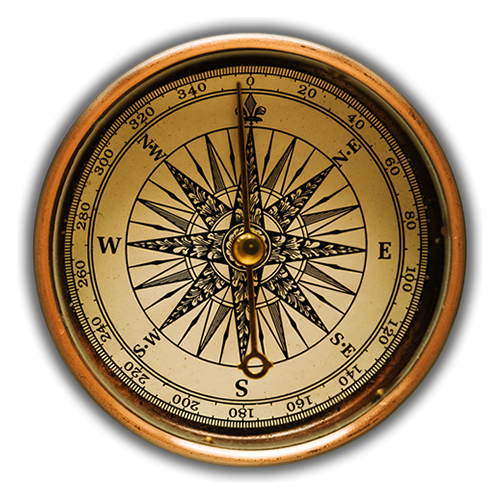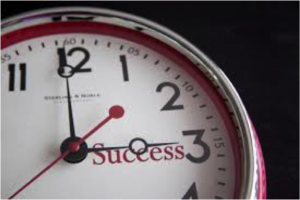Has this ever happened to you…you get to the end of your work day and wonder if you’ve achieved anything? Where did the time go? Maybe you start to think about the projects you didn’t get accomplished and ask yourself why?
 Chances are that you are being distracted at work.
Chances are that you are being distracted at work.
It happens to us all in small ways: the bell on your personal cell phone signaling a text message; the little banner which flashes across your computer screen to announce the arrival of a new email; the co-worker who stops by your office to commiserate at length about his inability to work on the new project because he doesn’t have enough time.
Taken separately these are all just tiny incidents. We can handle one item and then get back to the task at hand. Together, however, they become a raging river of distractions which take us careening off course and leave us feeling depleted and exhausted. An overload of continuous distractions can cause us to become low performers, which can potentially impact our job negatively.
Let’s look at the story of Sally (of course, not her real name). Sally was an exceptional supervisor managing an award-winning marketing team. She had an open door policy with her team members and would invite anyone to discuss anything with her at anytime. Sally’s office was like a revolving door- people coming in and going out all day long.
During the holidays Sally’s children got their own cell phones. Everyday after school the kids would send oodles of text messages to her seeking her attention as a referee in their disputes. Sally began to avoid marketing calls with clients during that “magical” after school time to be available if the children sent a text. This cut Sally’s productivity down substantially. She started to work later and later, which eroded what little work-life balance she had.
To make matters worse, Sally’s husband also got a new iPhone 6 and began sending emails and text messages to her throughout the day about meaningless dribble such as, “Let’s remember to pick up cat food on Saturday!” The dings, the dongs, the bells and the whistles were distracting not only to Sally but to her team as well. Sally’s unfinished projects were stacking up and she was at the breaking point. Her distractions were insidious. She did not really know why she was being so unproductive, only that she was not the high-performer she once was.
Fearing that she was going to receive a terrible performance review, Sally wisely sought some advice for this complicated problem.
Sally’s mentor suggested that she begin to take control of the situation by completing a daily time log. Sally agreed to document which project she was working on every 30 minutes. If she was interrupted, she would log it by noting who interrupted her and what the interruption was about.
Sally kept track of her time and was shocked after reviewing just the first three days. She clearly saw some patterns that needed to be changed. She knew that she had to take action to dismantle her daily distractions and to get her work life back on track again.
Sally focused on changing several behaviors that made all of the difference in the world:
- Start the day with uninterrupted time. Sally arrived at work, went into her office, closed the door and started her day by working on one high-priority project for 30 minutes. She did not check her email. She did not check voice messages. Instead she immediately dug into her most pressing project. After 30 minutes of uninterrupted and focused time, she opened her door and emerged, feeling as though she had already accomplished something important for the day.
- Build time into the schedule to check and respond to email, voice and text messages. Sally decided that she would check her devices and respond only during three windows of time each day: After her uninterrupted 30 minutes of morning work time; after lunch; and for an hour before she left the office for the day. She also instructed her family to not send text messages or call her during the work day unless it was an emergency. Sally had to remind herself over and over again that she did not have to quickly react to each message she was receiving. She felt comfortable responding within 24 hours. She gave herself permission to take her time and to be purposeful about her responses to other people’s inquiries.
- Scheduling team time and one-on-one time with her employees. Sally subtly changed her open door policy to the proactive model of scheduling time each week to speak with people. Of course, Sally will help with problem solving in emergency situations, but if she thinks that a problem can wait she will ask the employee to put it on their “Meeting with Sally” list.
- Use Friday afternoons for unfinished business and planning the week ahead. Sally deliberately schedules time in the office and at her desk on Fridays to finish those projects which can be wrapped up before the weekend. She also finds it useful to review upcoming projects for the week ahead. When Sally leaves the office on Fridays, she knows that she can enjoy her time with her family during the weekend because she left things in a good place at work.
We all need to be ever-vigilant in minimizing our own work distractions and interruptions to maximize the balance between our personal and our professional lives. Using these four time-saving tips can help us do just that.




 Do you ever end the work day and, in a befuddled sort of way, ask yourself where your time went? If your answer is yes, you are not alone. One of the biggest challenges to creating wellbeing in our work and in our lives is our habit of letting time slip away without really knowing where it is being spent. The old saying is true: “The more you do of what you are doing, the more you’ll get of what you are getting”.
Do you ever end the work day and, in a befuddled sort of way, ask yourself where your time went? If your answer is yes, you are not alone. One of the biggest challenges to creating wellbeing in our work and in our lives is our habit of letting time slip away without really knowing where it is being spent. The old saying is true: “The more you do of what you are doing, the more you’ll get of what you are getting”.

